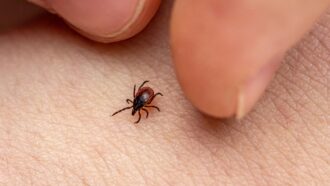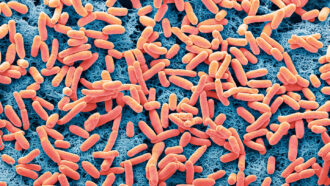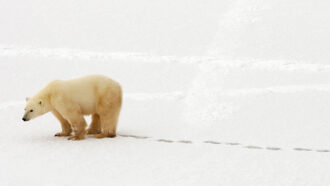Genetics
-
 Life
LifeScientists Say: Chimera
What does it mean to be an individual? The genetic mashups called chimeras might challenge your assumptions.
-
 Microbes
MicrobesUnder the microscope, this biologist sees a tiny jungle
Sally Warring has long been captivated by the beauty of mostly single-celled life forms called protists.
-
 Genetics
GeneticsThe discovery of microRNA wins the 2024 Nobel Prize in physiology
Victor Ambros and Gary Ruvkun discovered tiny snippets of genetic material, called microRNAs, that play a big role in making sure cells work as they should.
By Tina Hesman Saey and Sophie Hartley -
 Animals
AnimalsThe last woolly mammoths offer new clues to why this species died out
The last woolly mammoth herd experienced a drop in genetic variation. But this is likely not what doomed these majestic beasts to extinction, new data suggest.
By Claire Yuan -
 Genetics
GeneticsScientists Say: Telomere
These protective caps at the ends of chromosomes play a key role in cell replication.
-
 Animals
AnimalsFreeze-drying turned a woolly mammoth’s DNA into ‘chromoglass’
The 3-D structure of this now-glassy DNA revealed similarities — and differences — between woolly mammoths and elephants.
-
 Plants
PlantsGene editing may help rice better withstand climate change
Three genes may limit the ability of rice to handle dry or salty conditions. A Regeneron ISEF finalist shows that CRISPR could target and change them.
-
 Genetics
GeneticsA protein in sweat may protect people from Lyme disease
That protein stopped the disease-causing bacterium from growing in lab dishes or infecting mice.
-
 Genetics
GeneticsScientists Say: Genetic Engineering
Genetic engineering involves adding, changing or removing certain pieces of DNA from a living thing to give it desired traits.
-
 Health & Medicine
Health & MedicineA new type of immune cell may cause lifelong allergies
These special memory cells were present in people with allergies and absent in those without.
-
 Animals
AnimalsPaw-print DNA lets scientists track out-of-sight polar bears
This environmental DNA can aid in conserving species that are hard or dangerous to observe.
-
 Animals
AnimalsHere’s how kingfishers avoid concussions during high-speed dives
Understanding the genetic adaptations that protect the birds’ brains as they dive might one day offer clues to protecting human brains.